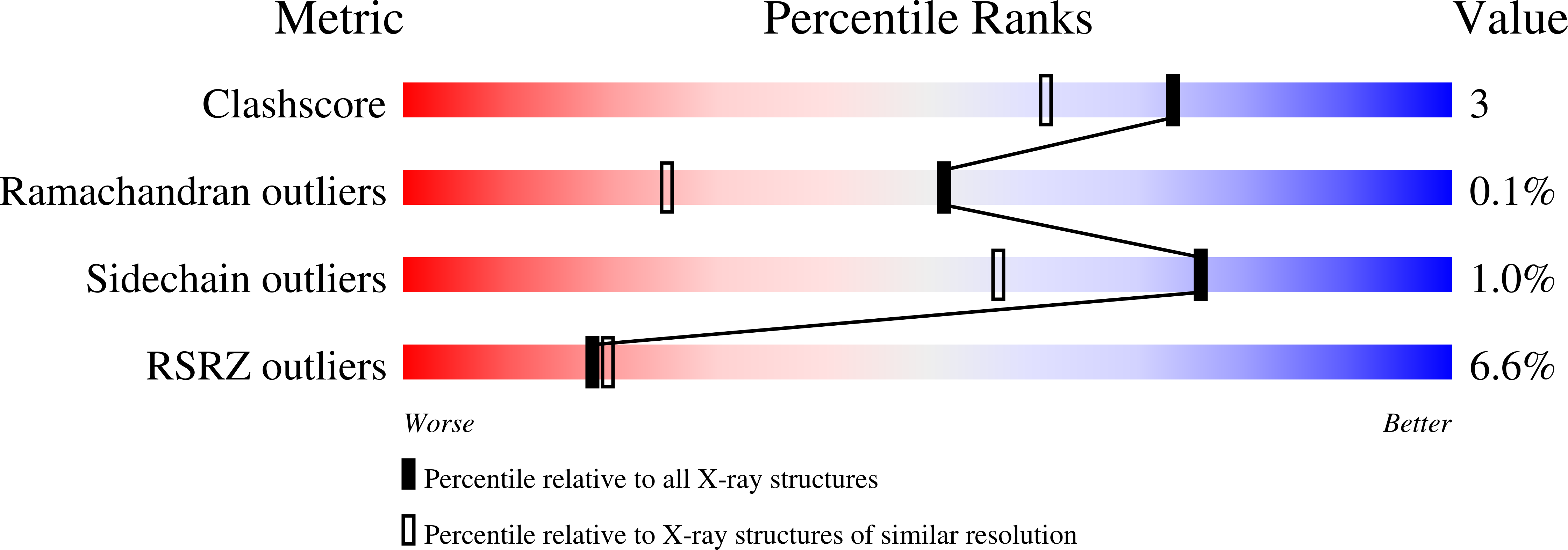Structural Basis of the Suppressed Catalytic Activity of Wild-Type Human Glutathione Transferase T1-1 Compared to its W234R Mutant.
Tars, K., Larsson, A.-K., Shokeer, A., Olin, B., Mannervik, B., Kleywegt, G.J.(2006) J Mol Biol 355: 96
- PubMed: 16298388
- DOI: https://doi.org/10.1016/j.jmb.2005.10.049
- Primary Citation of Related Structures:
2C3N, 2C3Q, 2C3T - PubMed Abstract:
The crystal structures of wild-type human theta class glutathione-S-transferase (GST) T1-1 and its W234R mutant, where Trp234 was replaced by Arg, were solved both in the presence and absence of S-hexyl-glutathione. The W234R mutant was of interest due to its previously observed enhanced catalytic activity compared to the wild-type enzyme. GST T1-1 from rat and mouse naturally contain Arg in position 234, with correspondingly high catalytic efficiency. The overall structure of GST T1-1 is similar to that of GST T2-2, as expected from their 53% sequence identity at the protein level. Wild-type GST T1-1 has the side-chain of Trp234 occupying a significant portion of the active site. This bulky residue prevents efficient binding of both glutathione and hydrophobic substrates through steric hindrance. The wild-type GST T1-1 crystal structure, obtained from co-crystallization experiments with glutathione and its derivatives, showed no electron density for the glutathione ligand. However, the structure of GST T1-1 mutant W234R showed clear electron density for S-hexyl-glutathione after co-crystallization. In contrast to Trp234 in the wild-type structure, the side-chain of Arg234 in the mutant does not occupy any part of the substrate-binding site. Instead, Arg234 is pointing in a different direction and, in addition, interacts with the carboxylate group of glutathione. These findings explain our earlier observation that the W234R mutant has a markedly improved catalytic activity with most substrates tested to date compared to the wild-type enzyme. GST T1-1 catalyzes detoxication reactions as well as reactions that result in toxic products, and our findings therefore suggest that humans have gained an evolutionary advantage by a partially disabled active site.
Organizational Affiliation:
Department of Cell and Molecular Biology, Uppsala University, Biomedical Centre, Box 590, SE-751 24, Uppsala, Sweden. kaspars@xray.bmc.uu.se















